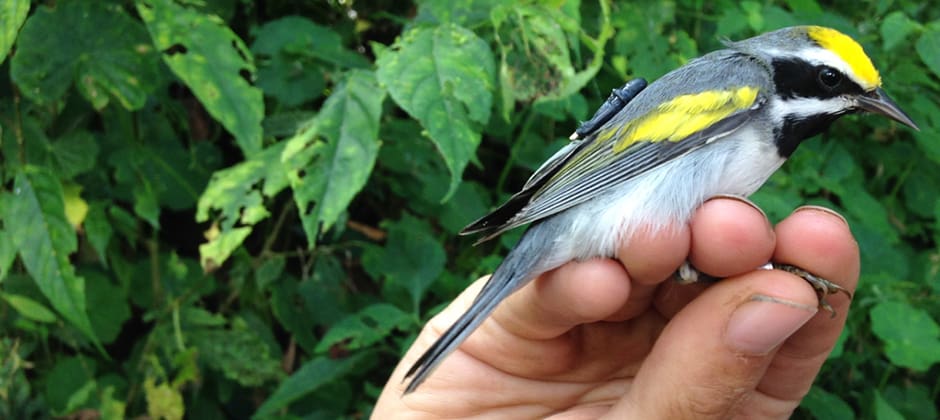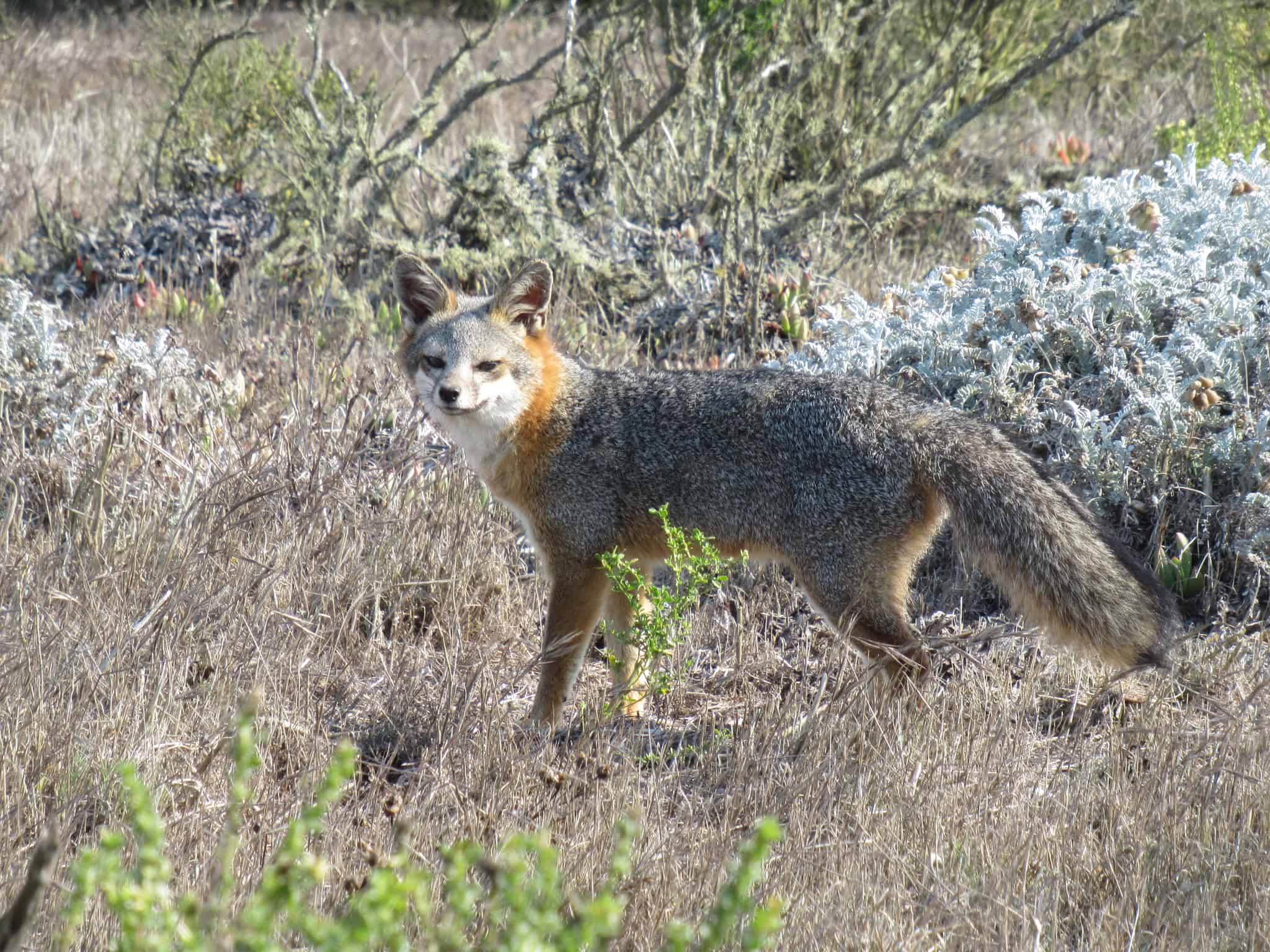Share this article
Geolocators yield conservation clues for migratory birds
Tiny geolocators attached to the backs of golden-winged warblers have shed new light on their migrations and revealed a part of the globe that could be critical to conserving the declining species.
In a study published recently in The Auk: Ornithological Advances, researchers found that on their return to the United States and Canada to breed during the spring, most golden-winged warblers (Vermivora chrysoptera) take a break in the region between southern Mexico and Guatemala to fuel up for the perilous flight.
That stopover could make the area particularly important for conservation, said Ruth Bennett, a research fellow at the Smithsonian Migratory Bird Center and the study’s lead author.
“That’s a region that is experiencing very high rates of land use change right now,” Bennett said. “There’s a lot of deforestation for cattle ranching and agriculture, which is sometimes linked with narco activity.” While both the Mexico and Guatemala sides of the region have several national parks and biosphere reserves, illegal activity continues to deforest those areas, she said. “Until we conduct surveys on the ground and identify the highest density sites for golden wings, we won’t know how conserved the area is for them, but the trends in that region are alarming.”
An estimated 400,000 golden-winged warblers make up two populations — one that breeds around the Great Lakes and another in the Appalachians. The Appalachian warblers’ numbers have decreased over 90% in the past 50 years.
The transmitters revealed two different stories about golden-winged warbler migration. While about 80% of the warblers they tagged made the stopover, the rest flew directly across the Gulf, shaving off about a week of spring migration time. That likely gives them a selective advantage on spring breeding grounds, Bennett said, and it could help the population deal with changes to climate and the landscape by ensuring that at least some can make the journey without the stopover.
“We think that’s a positive thing,” she said.
Researchers attached the tiny geolocators to 37 warblers on their wintering grounds in Central America. But because only male warblers are considered large enough to handle the extra weight, researchers were unable to study females, which may have different migratory patterns, Bennett said.
Migration is a dangerous time for birds, especially during flights over large bodies of water like the Gulf of Mexico. Most golden-winged warblers endure over 600 miles of sustained flight. That makes their stopover between Mexico and Guatemala particularly critical.
“I think from a conservation perspective, the next thing we should do is some on-the-ground field surveys,” Bennett said. “In the stopover region, we’ve identified a two-week window that the birds use the area. So we would want to do surveys across all potential habitats that they’re using and identify the highest density areas. Then we can start doing some targeted banding to look at how fast they’re able to fuel up and which stopover habitats are the highest quality for them.”
The study also uncovered another surprise. Birds with longer wings migrated greater distances, researchers found, but they’re not sure why.
“As we continue our research, we’re going to want to collect better data about wing shape and flight speed to figure out exactly what the relationship is between body shape, size, and flight efficiency,” Bennett said.
Header Image: Researchers affixed tiny geolocators to golden-winged warblers to study their spring migration. ©Ruth Bennett








